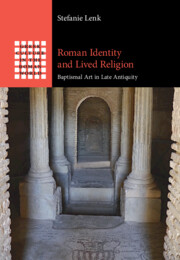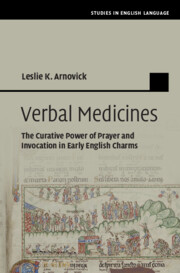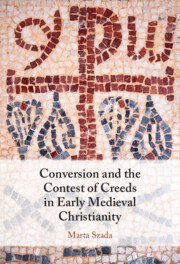Refine search
Actions for selected content:
93 results
4 - Between the Rivers Jordan and Chebar
- from Part II - A Sign for This Generation: Reading the Gospels with Origen
-
- Book:
- The Life of Jesus in the Writings of Origen of Alexandria
- Published online:
- 26 September 2025
- Print publication:
- 16 October 2025, pp 71-91
-
- Chapter
- Export citation
8 - Liturgy and the Sacraments
- from Part II - The Celebration of the Liturgy
-
-
- Book:
- The Cambridge Companion to Christian Liturgy
- Published online:
- 19 September 2025
- Print publication:
- 09 October 2025, pp 133-154
-
- Chapter
- Export citation
1 - Liturgy in Early Christianity
- from Part I - Liturgy Throughout the Ages
-
-
- Book:
- The Cambridge Companion to Christian Liturgy
- Published online:
- 19 September 2025
- Print publication:
- 09 October 2025, pp 7-23
-
- Chapter
- Export citation

The Cambridge Companion to Christian Liturgy
-
- Published online:
- 19 September 2025
- Print publication:
- 09 October 2025
4 - Spiritual Pasture in the Pacific
- from Part II - Religion in Place
-
- Book:
- Black Catholic Worlds
- Published online:
- 28 August 2025
- Print publication:
- 11 September 2025, pp 162-204
-
- Chapter
- Export citation
Chapter 7 - Leviticus in the Old Testament and Beyond
-
- Book:
- The Theology of the Book of Leviticus
- Published online:
- 18 July 2025
- Print publication:
- 07 August 2025, pp 234-262
-
- Chapter
- Export citation
Chapter 3 - Religious Practices Following Childbirth
-
- Book:
- Birth, Death, and Domestic Religion in Early Modern London
- Published online:
- 17 July 2025
- Print publication:
- 31 July 2025, pp 97-124
-
- Chapter
- Export citation
49 - The Spread of Christianity
- from Part V - Issues and Debates
-
- Book:
- The Cambridge Encyclopaedia of Late Antique Art and Archaeology
- Published online:
- 04 July 2025
- Print publication:
- 31 July 2025, pp 857-887
-
- Chapter
- Export citation
12 - Preaching on the Church’s Sacraments
- from Part III - Augustine’s Preaching Themes
-
-
- Book:
- The Cambridge Companion to Augustine's Sermons
- Published online:
- 26 May 2025
- Print publication:
- 12 June 2025, pp 226-244
-
- Chapter
- Export citation
16 - Tertullian of Carthage, On Repentance and On Modesty 1–4, 21–22
- from Part III - Imagining the Community
-
-
- Book:
- The Cambridge Edition of Early Christian Writings
- Published online:
- 19 May 2025
- Print publication:
- 12 June 2025, pp 293-321
-
- Chapter
- Export citation
Chapter 4 - Blessing and Protection
-
- Book:
- Protestant Bodies
- Published online:
- 20 February 2025
- Print publication:
- 27 February 2025, pp 162-216
-
- Chapter
- Export citation
2 - Hatching, Matching, and Dispatching
-
- Book:
- Money and Irish Catholicism
- Published online:
- 20 February 2025
- Print publication:
- 27 February 2025, pp 55-94
-
- Chapter
- Export citation

Roman Identity and Lived Religion
- Baptismal Art in Late Antiquity
-
- Published online:
- 08 February 2025
- Print publication:
- 20 February 2025

Verbal Medicines
- The Curative Power of Prayer and Invocation in Early English Charms
-
- Published online:
- 29 November 2024
- Print publication:
- 07 November 2024
Chapter 9 - Baptism
- from Part III - All in Christ
-
- Book:
- Theology and the Mythic Sensibility
- Published online:
- 07 November 2024
- Print publication:
- 21 November 2024, pp 183-196
-
- Chapter
- Export citation
Chapter 1 - Invoking Baptism
-
- Book:
- Verbal Medicines
- Published online:
- 29 November 2024
- Print publication:
- 07 November 2024, pp 33-78
-
- Chapter
- Export citation
Conclusion
-
- Book:
- Conversion and the Contest of Creeds in Early Medieval Christianity
- Published online:
- 06 June 2024
- Print publication:
- 13 June 2024, pp 284-294
-
- Chapter
- Export citation

Conversion and the Contest of Creeds in Early Medieval Christianity
-
- Published online:
- 06 June 2024
- Print publication:
- 13 June 2024
II.40 - A Woman Is Tried for Heresy at Norwich: a Court Record
- from Fifteenth Century
-
- Book:
- The Cambridge Anthology of British Medieval Latin
- Published online:
- 11 January 2024
- Print publication:
- 01 February 2024, pp 352-356
-
- Chapter
- Export citation
II.50 - Safeguarding, Accidents and Death
- from Fifteenth Century
-
- Book:
- The Cambridge Anthology of British Medieval Latin
- Published online:
- 11 January 2024
- Print publication:
- 01 February 2024, pp 491-504
-
- Chapter
- Export citation
